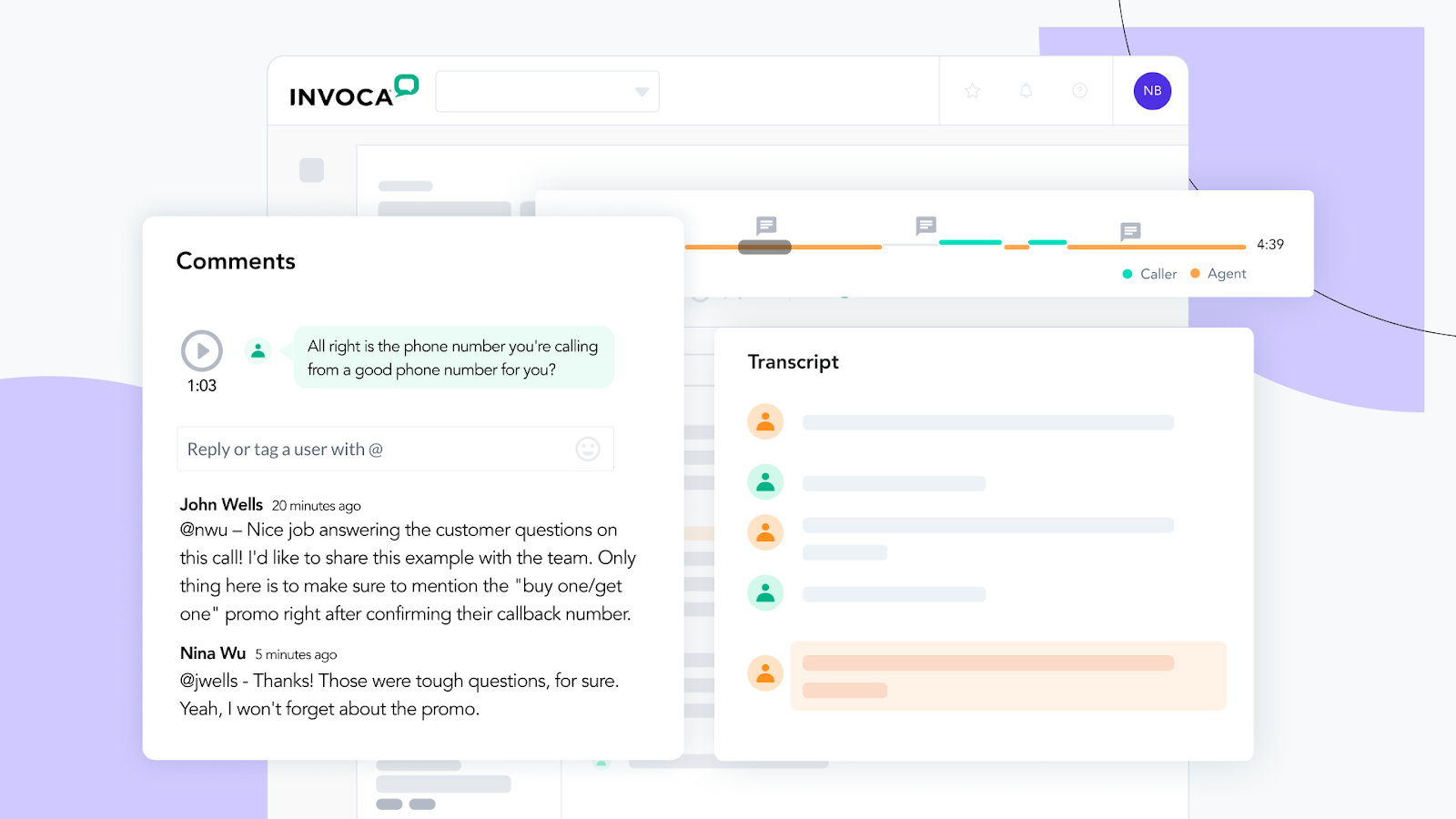The idea of using a customer experience strategy gained momentum in the 1990s as businesses began to realize that customer satisfaction requires more than simply delivering a product — it requires designing an overall experience. Fast-forward to today, and building a strong customer experience (CX) strategy is a priority for any major brand.
A thoughtful strategy fuels customer loyalty and satisfaction, while also boosting revenue growth. It relies on efficient, seamless, and personalized service. After all, we all want to feel well taken care of, whether we’re shopping online, calling for help, or visiting a store in person. (Our own research shows 63% of consumers will pay more for a great experience, while 76% will walk away after just one bad one.)
In this post, we’ll break down what makes an exceptional customer experience strategy — and how you can build one that sets your brand apart.
Main Takeaways
- A customer experience strategy should be adopted across the entire organization — not confined to marketing or customer service.
- When executed effectively, a CX strategy can fuel growth while reducing costs.
- Customer experience extends far beyond online interactions; it encompasses every possible touchpoint between your brand and the customer, both online and offline.
- Data analysis and AI tools are critical for scaling and personalizing your customer experience strategy.
What Is a Customer Experience Strategy?
A customer experience strategy is a proactive plan to shape how customers perceive and feel about your brand at every touchpoint. Unlike customer service, which is reactive and focused on resolving problems, customer experience is designed to build positive impressions and emotional connections before issues potentially arise.
Why a Customer Experience Strategy Matters
Salesforce’s State of the Connected Customer reports that 80% of customers see experience as equally important as the product or service itself. Yet, in a separate survey from Forrester, only 3% of companies consider themselves “customer-obsessed.”
That’s a massive missed opportunity. Improving CX can drive revenue growth. Consider this: An auto manufacturer could generate more than $1 billion in additional revenue with just a 1-point increase in its CX Index score, thanks to greater customer loyalty, repeat purchases, and return visits to its dealerships for repairs and service.
The financial impact of a good CX strategy can be considerable. Not only does a positive customer experience encourage more customers to be loyal and spend, but it also helps to:
- Reduce a brand’s cost of customer acquisition and customer retention
- Reduce customer service and contact center costs
- Increase business growth by helping it to stand out in crowded, competitive markets
So, if you’re now inspired to develop a customer experience strategy for your business or rethink your existing approach, where do you start? With the basics.
Key Components of a Comprehensive CX Plan
The foundation for any effective customer experience strategy includes the following three components.
1. Vision and Goals
Successful companies have a clear, concise, customer-centric vision. For example, online shoe and clothing retailer Zappos’ vision is “to provide the best customer service possible. Deliver ‘WOW’ through service.” That’s pretty clear, isn’t it?
A good vision statement helps your customers understand your values and how you plan to deliver on them. It also aligns those values with your customer experience goals and your broader business objectives.
2. Technology and Tools
Technology tools that collect, organize, and interpret customer data are your greatest allies in building a comprehensive CX strategy. Some of the essentials include:
- Customer relationship management (CRM) systems, such as Salesforce
- CX management platforms, like Zendesk or HubSpot
- Data visualization and analytics tools, like Tableau or Zoho
- Revenue execution platforms, like Invoca, which connect online marketing efforts to offline conversations and conversions, giving you a complete view of the customer experience
3. Cross-Functional Collaboration
Customer experience is holistic, which means every department should have a seat at the CX strategy table. Here’s how key teams can contribute:
- Marketing: Sets the brand promise and manages customer communication
- Sales: Builds relationships through a consultative, customer-first approach
- Customer Service: Resolves issues and supports customers with empathy
- Product Development: Designs user-friendly, intuitive products and features
Siloed organizations struggle to deliver exceptional experiences, so be sure everyone is engaged in shaping your CX strategy.
7 Steps to a Winning Customer Experience Strategy
We’ve outlined seven key steps to help you build a winning customer experience strategy. Here’s a quick rundown of what each step involves.
Step 1: Identify Your Target Audience
Personalization is at the heart of a great customer experience, but you can’t deliver it without truly knowing who your customers are and what motivates them. You’ll need to:
Create customer personas
Create customer personas using freely available templates or checklists like this one from Venngage. Fill out your chosen template with data such as age, location, income, lifestyle choices, attitudes, and opinions. Add pain points, buying behaviors, and preferred communication channels.
Pull data from industry sources, customer surveys, and direct feedback. Then, validate and enrich personas by analyzing customer data from online interactions, as well as offline sources like phone conversations. (Hint: Use tools from Invoca like Signal AI and Topic Explorer to make this process easier.)
Segment for relevance
Once you’ve built out your customer personas, you can move on to customer segmentation. This involves sorting customers by relevance, focusing on factors from age and gender to lifestyle choices and other relevant criteria.
Segmentation improves customer experience by making customers feel known and special. For example, a mobile phone company might segment repeat customers and send them a special loyalty coupon by email to use for phone accessories.
Using a conversation analytics tool, such as Invoca, can help you segment customers even more precisely by tapping into the true voice of the customer — insights drawn directly from phone conversations and other rich data sources.
Step 2: Map the Customer Journey
Next, create a map of the entire customer journey, incorporating all touchpoints from the moment a customer first encounters your brand, and layering in your customer personas. This visual representation helps you understand the customer’s emotions, behaviors, and actions at every stage.
Use this map to define the current journey based on real data. Then, go a step further by mapping out the ideal customer journey, identifying and addressing any pain points uncovered in your actual journey.
Outline key touchpoints
Identifying customer interactions requires tracking every online and offline touchpoint. Online transactions are tracked digitally, but tracking offline interactions is more complex. You can make the process easier by incorporating conversation analytics tools into your phone system and call centers to capture key moments in phone calls.
Here are examples of common offline touchpoints across industries:
- Automotive: service appointment booking, showroom visit, inventory check by phone
- Banking: telebanking, in-person visit to open/close account
- Healthcare: appointment booking, calling in a prescription
- Home services: in-person visits for quotes, appointment booking
- Insurance: Calling for a quote, phone survey
- Retail: in-store purchase, order-by-phone
- Telecommunications: in-store visits, calling to add services, reporting outages
- Travel and hospitality: flight booking, upgrade request, concierge request
Visualize emotions and obstacles
Customer journey maps can help bring to light customer pain points and emotions, providing valuable context to interactions. For example, a patient of a medical practice may be unable to schedule appointments due to the lack of specialized transport. Or perhaps their fear of needles has compelled them to put off several vaccination appointments.
By plotting emotions and obstacles on your journey map, you can prioritize the pain points to address first. In cases where a patient needs transportation, the practice can connect them with a reputable transportation provider. Once they arrive for their appointment, the doctor can then work on addressing their fear of needles, applying even more empathy in the delivery of care.
Step 3: Build a Team Culture Around CX
Another crucial step in building a winning CX strategy is to look inward. A customer-centric culture is at the heart of CX success — if you don’t have one, it’s time to create one ... fast!
Transforming an existing culture can be challenging, but it’s absolutely achievable. Here are some tips to get you started:
Prioritize leadership alignment
If you lead sales, marketing, or customer service, you’ll need C-suite buy-in for your CX strategy. Executives tend to think in terms of risk, reward, and return on investment (ROI), so it’s essential to present a business case that resonates with them.
The message to communicate to leadership is clear, though: A winning CX strategy drives operational efficiency, reduces costs, boosts productivity, and delivers competitive differentiation — all of which can increase market share and fuel revenue growth.
Provide employee training
To align employees with your customer experience vision, provide them with the training and resources they need to stay customer-focused. Share relevant data, communicate openly, and, most importantly, listen. In short, treat your employees the way you want them to treat your customers.
You can enhance training programs by using recordings of real customer interactions to provide team members with authentic scenarios that reflect the actual experiences of customers. Conversation intelligence platforms like Invoca can make developing these training modules even easier by leveraging call analysis to highlight key learning opportunities.

Step 4: Gather Feedback and Insights
You’ve listened to your employees — now it’s time to listen to your customers. Customer feedback is essential for building and maintaining a winning CX strategy. Use surveys, feedback forms, and brief questionnaires to gain a clear understanding of how customers view your brand and products.
The fresher the feedback, the more valuable it is. Gathering input promptly — for example, right after an interaction — provides the most relevant insights. If you’re tracking and recording phone calls, you can also use artificial intelligence tools to quickly and confidently extract feedback at scale, turning it into meaningful and actionable data.
Step 5: Measure CX ROI and Success Metrics
Metrics are essential for refining and improving your customer experience strategy. Here’s why it pays to track key indicators like these:
- Net Promoter Score (NPS): This metric provides insight into customer loyalty, but it shouldn’t be considered a gold standard. It indicates what a customer might do, not what they will do. You must supplement this score with additional data from other CX metrics such as Customer Satisfaction Score (CSAT) and customer effort score (CES).
- Customer lifetime value (CLV): Customer lifetime value measures a customer’s long-term worth to your business. You can calculate it by multiplying the purchase value, the purchase frequency, and the customer lifespan. For example, if the average customer spends $100 per month on a mobile phone plan and the average contract lasts four years, the CLV would be $100 × 12 months × 4 years = $4,800. Businesses with effective CX strategies should see more frequent and higher-value purchases, as loyal customers stay longer, ultimately increasing their CLV.
- Conversion and retention rates: Conversion rate tracks how often customers sign up for more information, respond to outreach, or make a purchase — the higher the rate, the more effective your customer experience strategy is likely to be. Similarly, strong customer retention rates — typically between 70% and 85% in most industries — signal that your CX strategy is successfully keeping customers engaged and loyal.
Step 6: Optimize for Omnichannel Engagement
Customers today demand the flexibility of an omnichannel experience so they can interact across any channel they choose, and on their schedule. So, it’s important to present consistent messaging and a cohesive brand feel whether you’re engaging with customers through texts, ads, via chatbots, or by phone.
Bridge digital and offline interactions
Delivering consistency means closing the gap between a customer’s online and offline experience to create a unified emotional connection with your brand. Online interactions are easy to track; offline ones are more challenging. But if you use a platform like Invoca, you can connect online digital activity to offline phone interactions through PreSense.
PreSense provides customer service agents with key insights from digital data indicating why a customer is calling, as well as who is calling. For example, if a customer browses insurance premiums moments before calling a sales agent, PreSense can show the agent key insights — like who is calling and what they were viewing online — in a pop-up screen. This allows the agent to proactively ask if the customer has questions about premiums or policies, creating a more seamless and personalized transition between online browsing and offline engagement.
See how PreSense works in the short video clip below:
Personalize the experience
To optimize the omnichannel experience, you must personalize, and that starts with having customer data at your fingertips. You can gather this data from many sources, including phone calls, if you use call recording and analysis tools.
Personalization can be recommending products based on past purchases, retargeting customers with ads for items they viewed but didn’t buy, or sending a text ad using geotargeting. Whatever tactics you choose, always keep privacy in mind and consider adopting a privacy-first approach to personalization.
Step 7: Use AI And Analytics for Deeper Insights
You can transform your CX strategy using the latest tools. AI-powered technologies such as conversation analytics can be trained to analyze customer calls at scale to uncover common patterns, behaviors, and insights to inform your customer experience content and strategy.
Be sure to use tools that are fully compliant with industry standards and local jurisdictions to avoid ethical or legal issues. For example, if you are a healthcare provider, you’ll want to make sure tools comply with HIPAA.
When implemented responsibly, conversation analytics can provide a major boost to your CX efforts. Invoca’s Signal AI, for instance, delivers game-changing insights from conversations. Telecom giant Verizon used it to identify which ad campaigns generated the most high-intent phone calls, then redirected more resources to those ads to increase their ROI.
Best Practices to Sustain Customer Loyalty
Customer loyalty is the foundational goal of a good CX strategy. Without loyalty, there is no customer. Here are two customer experience best practices to consider to achieve that goal.
Consistent Brand Messaging
Consistency in your brand messaging and interactions is essential for building and maintaining customer loyalty, especially in an omnichannel environment. For example, if your landscaping business offers a garden clean-up discount through a Google ad, customers should receive the same offer whether they call you directly or visit your website.
To maintain consistency, regularly monitor and audit your brand messaging and benchmark your content and assets against those of your competitors. These insights can help you develop and implement targeted recommendations to strengthen customer loyalty.
Continuous Improvement Based on Feedback
Good customer experience strategies are continuously refined and improved. This requires both data analysis and attention to direct customer feedback. Ideally, a CX strategy includes closed-loop feedback, where a brand reaches out to “close the loop” with customers who provide feedback on social media, the website, or in reviews on third-party sites like Google, Angi, or Trustpilot.
A simple framework for CX improvement involves planning, designing, and implementing a program, followed by testing and measuring results across channels and customer segments. Analyze data and feedback to identify areas for improvement. Lastly, implement any changes to the strategy. Wash, rinse, and repeat.
Transform Your Customer Experience Strategy with Invoca
Satisfied customers tend to remain loyal, which means that CX has a direct impact on revenue. Delivering a great experience drives growth, while a poor one can send customers packing.
As you develop or improve your customer experience strategy using the seven steps and additional best practices outlined above, consider using an AI-powered revenue execution platform like Invoca to support your success. Invoca translates offline call data into actionable insights that can help you personalize customer interactions, refine audience segmentation, create consistent engagement across channels — and confidently provide a standout CX.
Additional Reading
If you’d like to dive deeper into the elements of an effective customer experience strategy — and discover how conversation intelligence AI tools can help you boost revenue — check out these resources from Invoca:
- Improve the Digital Customer Experience with Conversation Intelligence
- Customer Experience Marketing: Why It Matters and Key Strategies
- The Ultimate Guide to Customer Segmentation: How to Identify and Target Your Ideal Customers
Ready to see how conversation intelligence can transform your customer experience strategy? Book a free demo with our team today. We’re here to help!

FAQs
How Long Does It Take to Implement a Customer Experience Strategy?
The timeline for implementing a customer experience strategy can vary widely. Depending on the size of your organization and the complexity of your strategy, it may take anywhere from a few months to several years. Beyond design and planning, implementation involves employee training, technology integration, program monitoring, and measurement — all of which take time and coordination to get right.
How Can Small Businesses Compete on Customer Experience with Limited Resources?
Technology is a powerful equalizer when it comes to customer experience. Small businesses can compete by investing strategically in tools that automate key aspects of CX, such as data collection and analysis. Chatbots, virtual assistants, and interactive voice response (IVR) systems can also help deliver flexible, efficient service that keeps customers happy, without breaking the budget.
How Do You Measure the ROI of a Customer Experience Strategy?
There is no single metric that captures the entire CX. However, you can use metrics such as the NPS, CLV, CSAT, and CES to help gauge the effectiveness of your strategy and identify opportunities for improvement.

